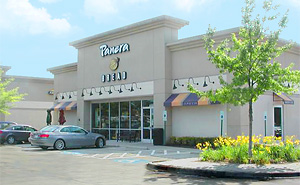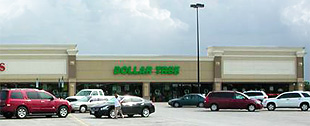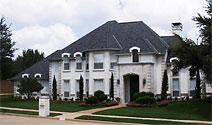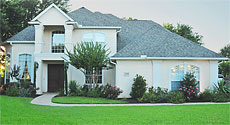The EIFS Dilemma
The Pros and Cons of EIFS
In the 80's and 90's it was difficult to get a stucco job, because everyone wanted EIFS. The people that marketed EIFS did a good job of convincing the public that it was far superior to stucco, because it was light weight and didn’t crack. In fact, they did such a good job of putting the fear in the public’s eye, that cracking in stucco meant that the integrity of the building was at stake.
Before I go on, I would like to say that EIFS has its place and works well in the right environment. I think that EIFS is a great product to use in a retail situation where, in most cases, it is applied to a metal structure, with the intent that it will probably be remodeled or changed often. EIFS is a great application for this, because it is inexpensive to tear it out and change the face of the building.
EIFS has become a disaster in more permanent applications like homes and churches, especially
on wood structures.  In most cases, homes are a lifetime investment, and the home owner is not in a position to tear it out and change it up as they would in a retail situation. The problem arises when moisture is allowed to get into the walls, usually through penetrations such as windows or doors, or any penetration for that matter. Once moisture gets into the wall, it becomes trapped and causes the structure to rot. Because EIFS is flexible and will only crack in extreme situations, the substrate and framing can be completely rotted out with no sign of problems from the outside. In most cases, homes are a lifetime investment, and the home owner is not in a position to tear it out and change it up as they would in a retail situation. The problem arises when moisture is allowed to get into the walls, usually through penetrations such as windows or doors, or any penetration for that matter. Once moisture gets into the wall, it becomes trapped and causes the structure to rot. Because EIFS is flexible and will only crack in extreme situations, the substrate and framing can be completely rotted out with no sign of problems from the outside.
In the last few years, we have re-done several homes, that used to be EIFS, with Stucco.
|




 In most cases, homes are a lifetime investment, and the home owner is not in a position to tear it out and change it up as they would in a retail situation. The problem arises when moisture is allowed to get into the walls, usually through penetrations such as windows or doors, or any penetration for that matter. Once moisture gets into the wall, it becomes trapped and causes the structure to rot. Because EIFS is flexible and will only crack in extreme situations, the substrate and framing can be completely rotted out with no sign of problems from the outside.
In most cases, homes are a lifetime investment, and the home owner is not in a position to tear it out and change it up as they would in a retail situation. The problem arises when moisture is allowed to get into the walls, usually through penetrations such as windows or doors, or any penetration for that matter. Once moisture gets into the wall, it becomes trapped and causes the structure to rot. Because EIFS is flexible and will only crack in extreme situations, the substrate and framing can be completely rotted out with no sign of problems from the outside.
